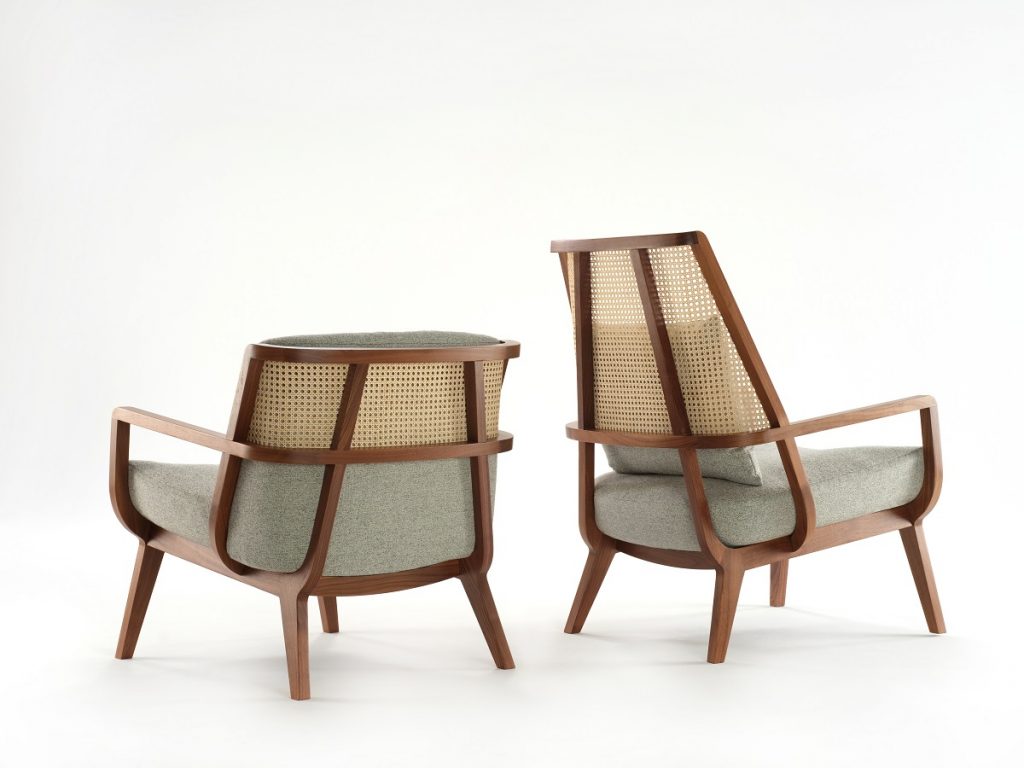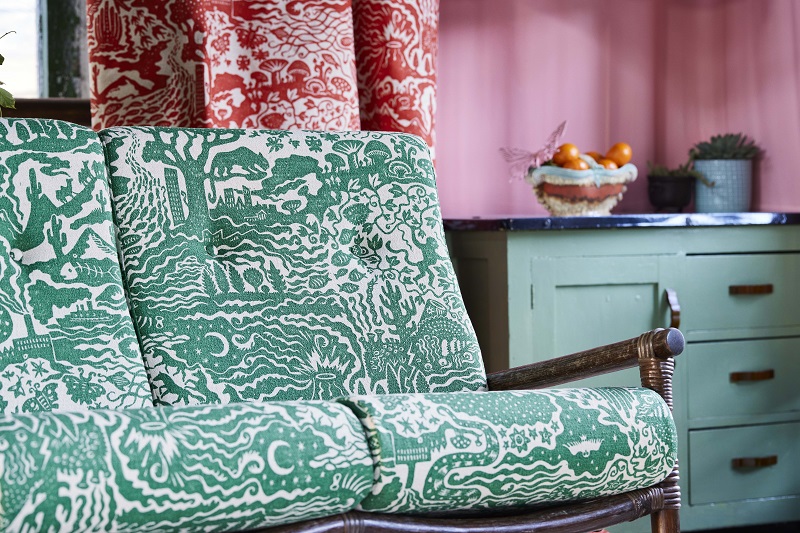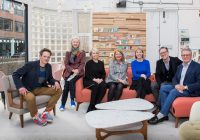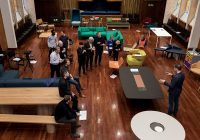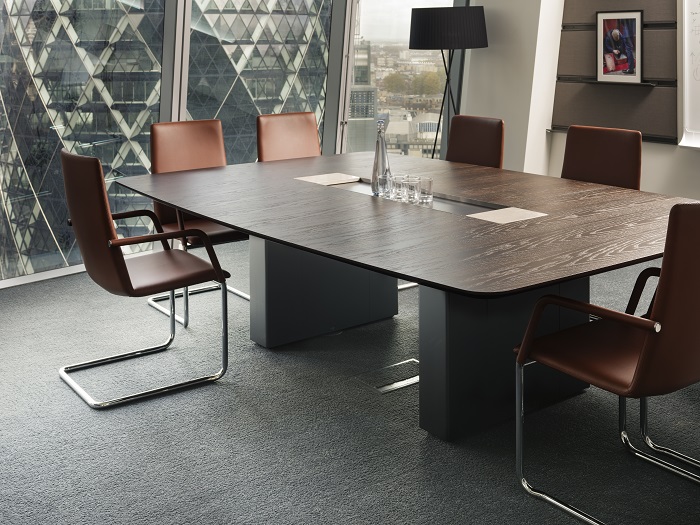
Technology: there is no getting away from it. We use it for work, we wear it to tell us about our health and wellbeing and to inform the world of our thoughts, opinions and feelings at the click of a button.
In fact there are very few activities these days that can’t be done, improved or made easier by technology.
How we accommodate the latest technology in the home and workplace, and how it interacts with us and supports our needs, is developing at the rate at which the latest mod cons are introduced.
One such design is the Object Collection of tables, which was awarded a Design Guild Mark in the Furniture category earlier this year.
Designed by Jonathan Prestwich of Prestwich Design for OPM Furniture, the design combines the latter’s heritage of traditional furniture making with the advantages of modern industrial design.
The Object Collection evolved from both parties’ wish to treat the interface between technology and cable management in a more aesthetically pleasing and intriguing way.
We caught up with Jonathan to find out more about the Object Collection.
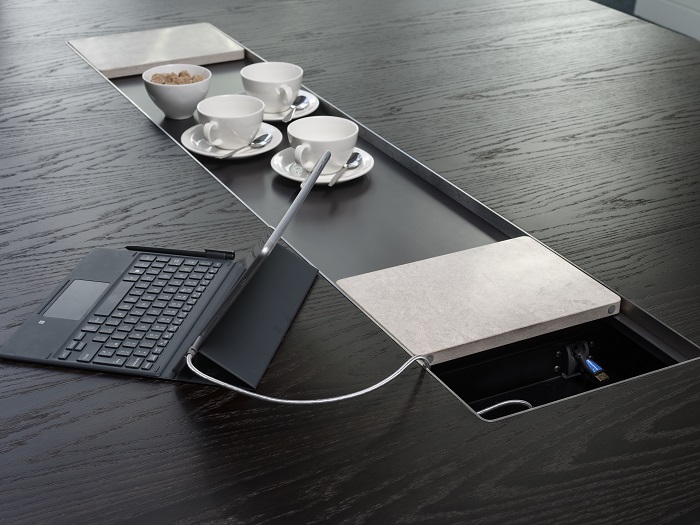
What initially inspired you to make this product?
There seemed a need for a table that could bring people together and engage them around a central focal point, which would create a sense of organisation but still fundamental simplicity that could put everyone around the table at ease.
Can you explain the concept for the Object Collection?
The concept was to combine everything that would be needed for a modern meeting e.g. power, data, AV equipment and also refreshments, while using quality materials in a fundamental way to create a feeling of wellbeing.
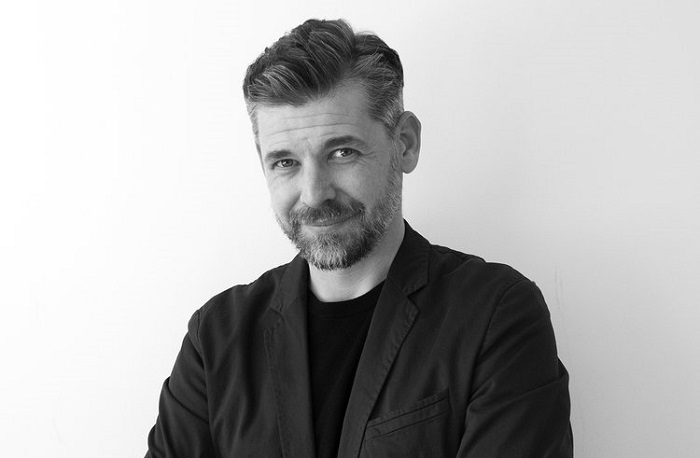
How have you struck the balance between function and design with this product?
Creating function is part of design and as such this was never a question we asked ourselves. The way people perceived the objects on the table, their instinctive understanding of the materials, how they expect them to feel and move and then delivering this experience was the balance that we were driven to achieve. We wanted people to feel reassured when experiencing the table to give them confidence in their surroundings.
What modifications did you make along the way?
Our development was all about the material, how they felt, the quality that was required so we made many prototypes developing the movement of the lid, testing with cables and different rolling or gliding techniques. Ultimately the table needed the right feel and the lid in particular, like the door of a Rolls Royce, needed to feel solid, yet glide smoothly.
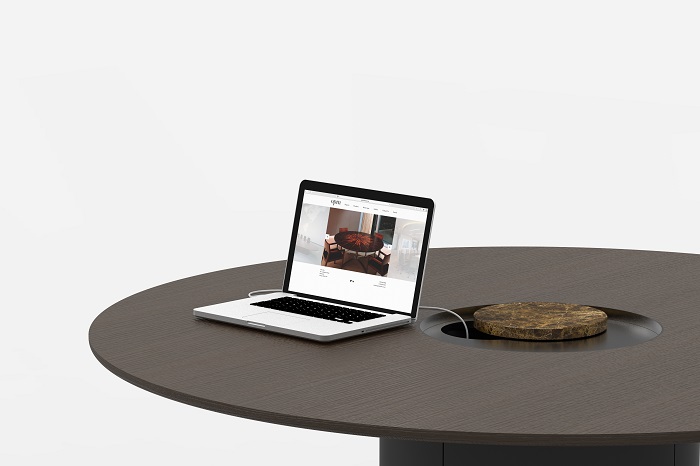
In what way do you think this design is different from anything else available on the market?
We focused on a particular fundamental quality experience around the table which I think few companies other than OPM can achieve.
What was the most challenging aspect of the design?
The most challenging aspect was really achieving a design that allowed the tables to be made repeatedly with the same high quality. Building this in at a design level is more important than we would first think.
For more information about Jonathan, go to www.jonathanprestwich.com



